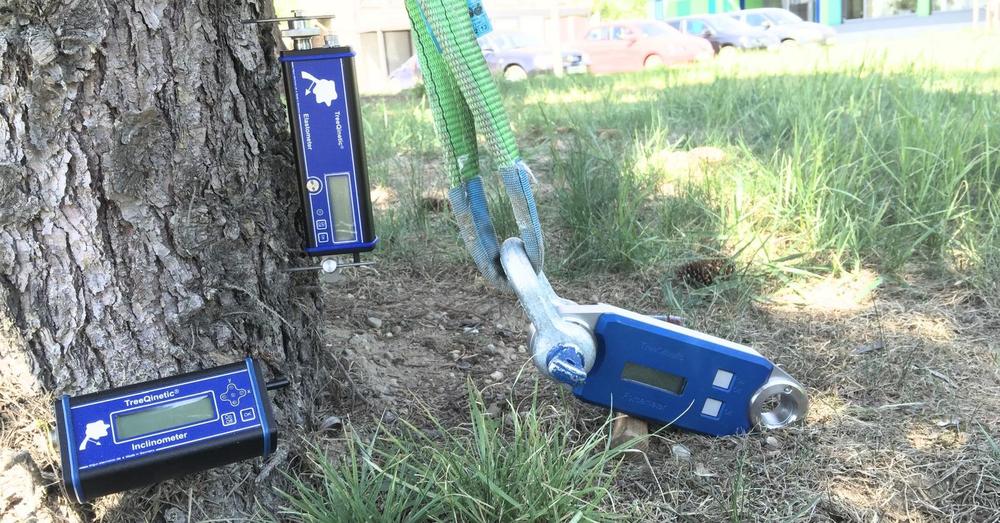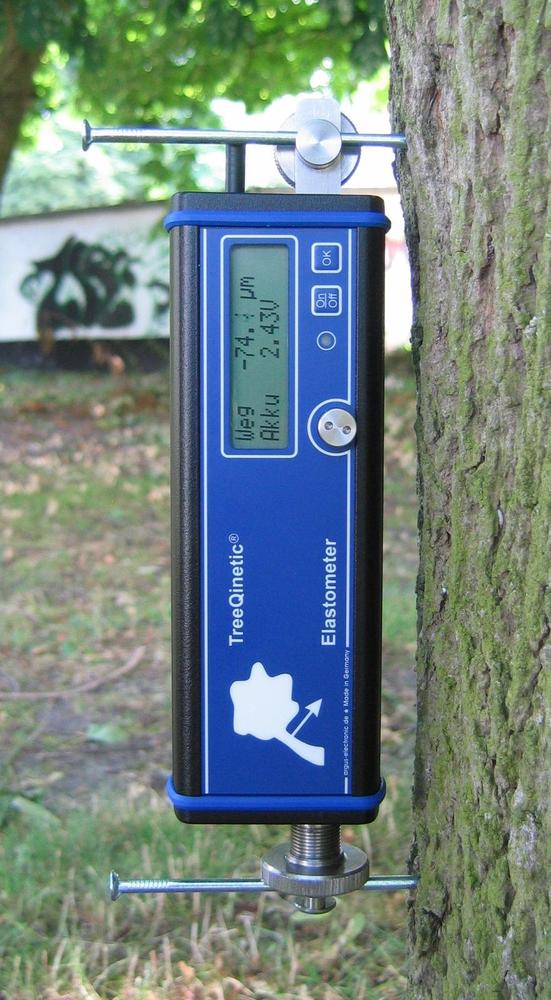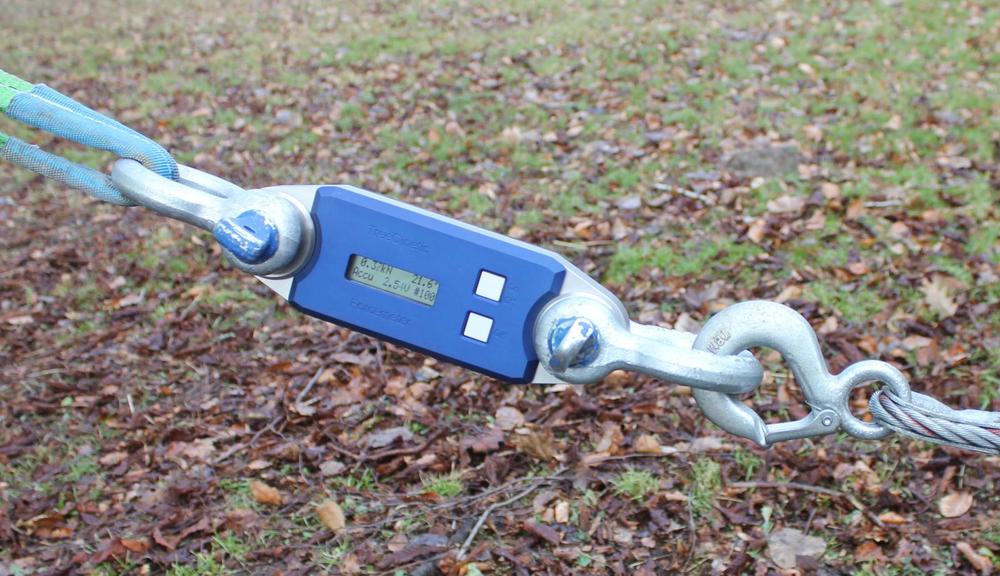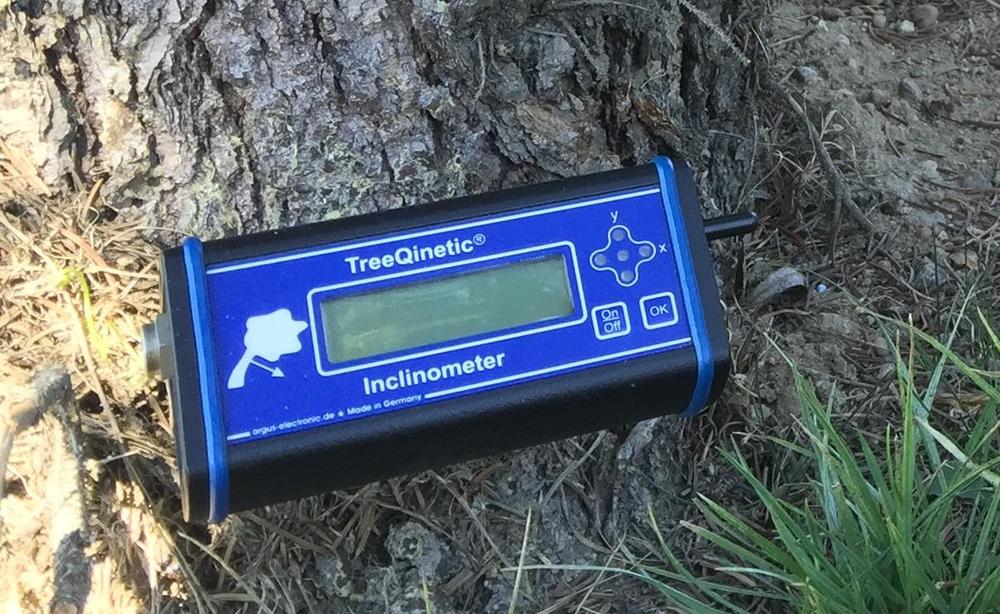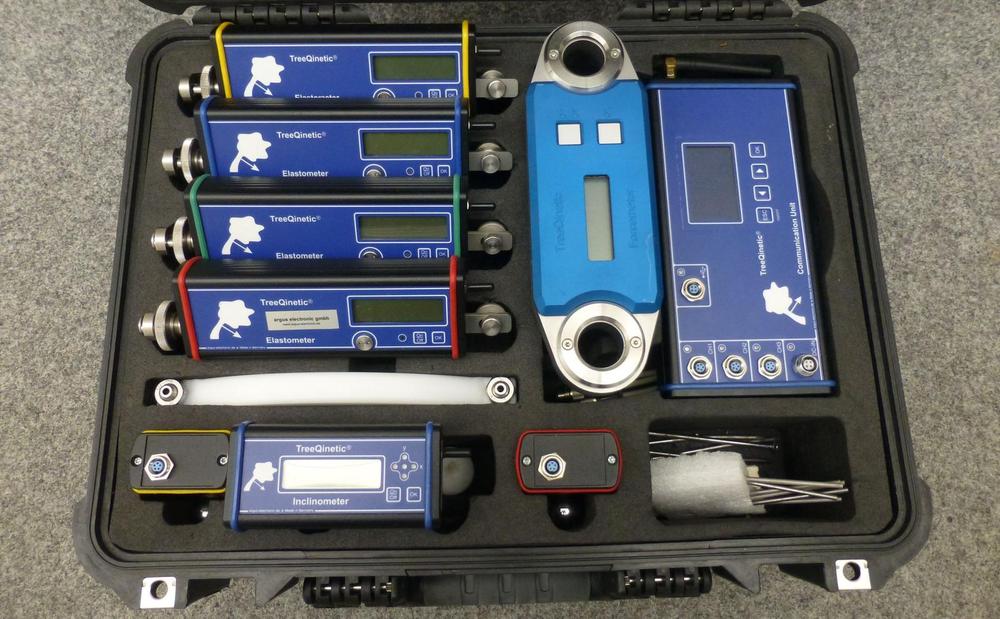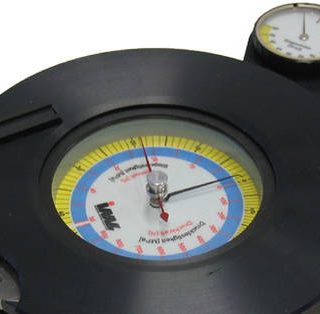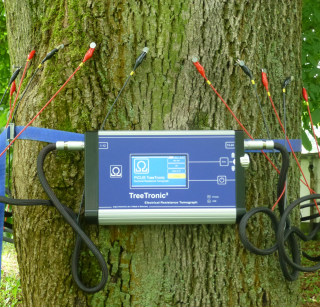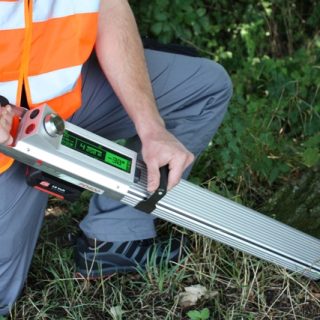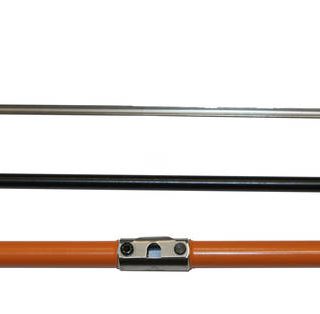The TreeQinetic system is used to carry out load tess (or pull tests) on trees for which an advanced tree risk assessment is needed. The TreeQinetic load test is measuring both the bending strength of the tree stem and the anchoring strength of the tree root system.
The tree pulling test method has been developed by Günther Sinn and Lothar Wessolly in the mid 1980’s.
The measuring principle
During a pulling test, a load (substituting for the wind) is exerted on a tree using a winch and a steel cable. The reaction of the stressed tree under this defined load is measured with high resolution devices (elastometer and inclinometer), and the data obtained are compared with those of sound trees. The major components to be considered in such calculations are the wind-load (the surface of the load-bearing structure, tree height, etc.) and the material properties of green wood.
The TreeQinetic Elastometer measure the strain of the marginal wood fibers of the trunk. TreeQinetic Inclinometer measure the tilt of the root plate. Those data recorded is being processed using the arbostat analysis software (http://www.arbosafe.com). The arbostat software compares that data with the result of the wind-load analysis of the tree.
The result of the calculation is displayed in diagrams that show the stem-breaking safety and root stability of the tree. In case the safety margins calculated are too low the arbostat softwarerecommends measures for crown reductions.
The TreeQinetic instruments for load tests measure precisely the reaktion of the tree to the pulling load. Up to nine Sensors (Elastometer, Inclinometer, Forcemeter) can be used at the same time. All data is continuesly recorded at the connected PC. The sensors can be connected wirelessly using a zigbee-radio connection or by cable.
TreeQinetic Elastometer
The Elastometer measure strain (compression and tension) of the marginal fibers of the tree trunk. The latest version “Elastometer 3i“ is capable to measure both stain and inclination at the point of its installation along the trunk. Having both information the bending line and curvature of the trunk can be calculated. This supports the analysis of defects in the trunk that may occur at old grafted trees and at old pruning wounds.
| Resolution | 0,1 µm |
| Accuracy | 1 µm |
| Measuring range | +/- 2 mm |
| Duration of operation (accu) | ~ 10 h at 20°C (radio connection to PC) |
| Distance between measuring tips | 198 – 202 mm |
| Diameter of measuring pins | 2 – 4 mm |
Inclinometer
The TreeQinetic Inclinometer measures the tilt of the root plate or of the trunk of the tree.
| Resolution: | 0,002° |
| Accuracy: | 0,005° |
| Measuring range: | +/- 15° |
| Duration of operation (accu): | ~ 10 h at 20°C (radio connection to PC) |
| Max. rande / distance of radio connectivity: | 1 to 30 meter |
Forcemeter
The TreeQinetic Forcemeter measures the force that is used to excite the tree during the load test. It features an inbuildt inclinometer that measures the angle of the pulling force during the load test.
| Resolution: | 0,01 kN |
| Accuracy: | 0,3 kN |
| Measuring range: | 0 – 40 kN |
| Duration of operation (accu): | ~ 15 h at 20°C (radio connection to PC) |

